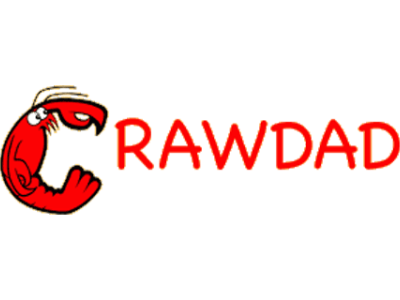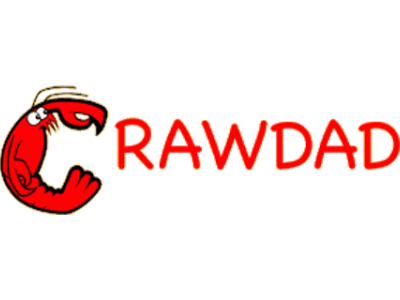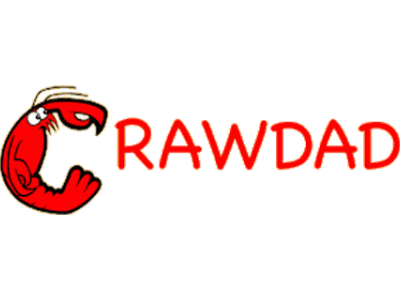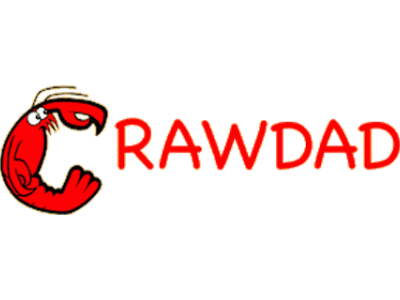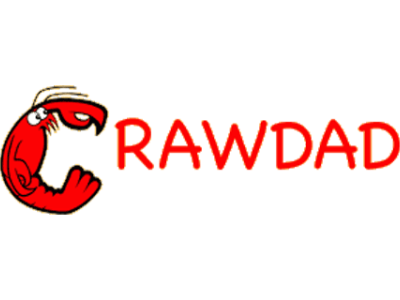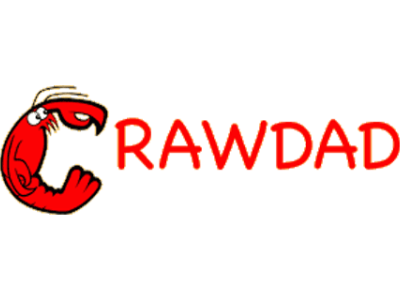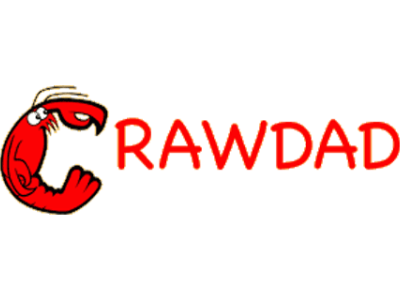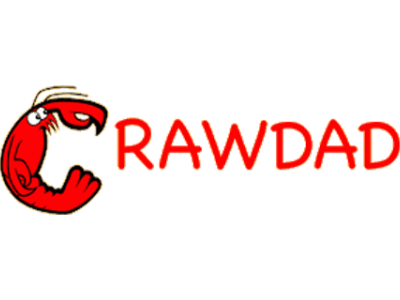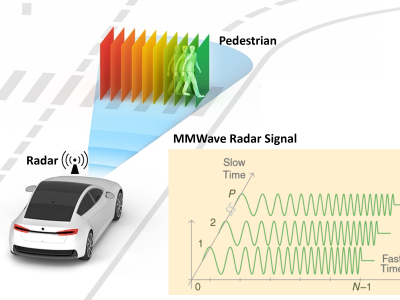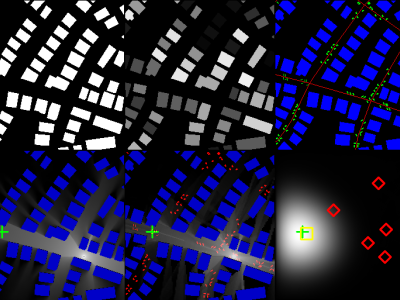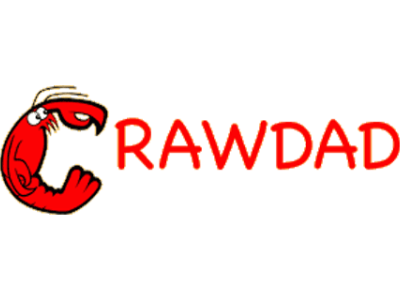CRAWDAD ucsb/ietf2005
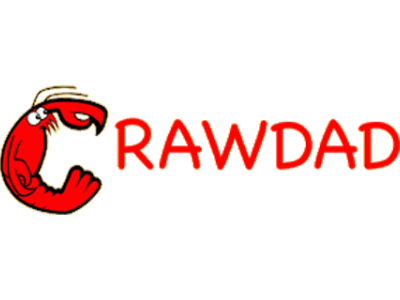
- Citation Author(s):
-
Amit JardoshKrishna N. Ramachandran (University of California, Santa Barbara)Kevin C. Almeroth (University of California, Santa Barbara)Elizabeth Belding (University of California, Santa Barbara)
- Submitted by:
- CRAWDAD Team
- Last updated:
- DOI:
- 10.15783/C71G62
 65 views
65 views
- Categories:
Abstract
This dataset includes the traces collected by wireless monitoring at the 62nd Internet Engineering Task Force (IETF) meeting held in Minneapolis, MN, March, 2005.
last modified : 2006-11-14
release date : 2005-10-19
date/time of measurement start : 2005-03-09
date/time of measurement end : 2005-03-10
collection environment : We collected data from a wireless network deployed at a recently concluded 62nd Internet Engineering Task Force (IETF) meeting held in Minneapolis, MN. The meeting was held March 6-11, 2005 and was attended by 1138 participants. Almost all of the participants used laptops or other wireless devices.
network configuration : The IETF network was comprised of 38 Airespace2 1250 access points (APs) distributed on three adjacent floors. Each Airespace AP supported four virtual APs. A virtual AP is a logical AP that exists within a physical device and enables the wireless LAN to be segmented into multiple broadcast domains. This provides the ability to map multiple Extended Service Set Identifiers (ESSIDs) to multiple Basic Service Set Identifiers (BSSIDs). Thus, at the IETF, a total of 112 APs (38 physical APs x 4 ESSIDs per physical AP) were available for utilization.
data collection methodology : The method adopted to collect information from the wireless portion of the IETF network is referred to as wireless network monitoring [yeo-framework] or vicinity sniffing. In order to capture network frames that were transmitted by access points and user devices in the network, we chose to place three laptops (wireless network sniffers) at a single vantage point in the network. The location was strategically selected so that our sniffers could overhear and record the maximum possible information.
sanitization : The data traces have been anonymized using tools from the CRAWDAD project (the tool used for anonymizing dartmouth/campus/tcpdump). In other words, the IP and MAC addresses have been hashed and the frame payloads have been removed.
Traceset
ucsb/ietf2005/wireless
Traceset collected on channel 1, 6, and 11 of the APs during the day session at the 62nd IETF Meeting.
- files: day_channel_1, day_channel_6, day_channel_11, plenary_channel_1, plenary_channel_6, plenary_channel_11
- description: Traceset collected on channel 1, 6, and 11 of the APs during the day session at the 62nd IETF Meeting.
- measurement purpose: Usage Characterization, Network Performance Analysis
- methodology: We performed vicinity sniffing (or wireless monitoring) using three IBM R32 Think Pad laptops. Each laptop was equipped with a Netgate 2511 PCMCIA 802.11b radio. The radios were configured to capture frames in a special operating mode called the RFMon mode. The RFMon mode enables the capture of regular data frames as well as IEEE management frames that are transmitted on a single channel. In addition, the RFMon mode records information for each captured frame. This information includes the send rate, the channel used for frame transmission, and the signal-to-noise ratio (SNR) of the frame as received by the sniffer. Because the Airespace APs were expected to switch between the 802.11b 1, 6, and 11 channels, our laptops were each configured to sniff on one of the three different channels for the duration of the session. The frames were captured using the sniffer utility, tethereal. The snap-length of the captured frames was set to 250 bytes in order to capture only the RFMon, MAC, IP, and TCP/UDP headers.
ucsb/ietf2005/wireless Traces
- day_channel_1: Trace collected on channel 1 of the APs during the day session at the 62nd IETF Meeting.
- configuration: Our laptop was configured to sniff on channel 1 for the duration of the day session at the 62nd IETF Meeting.
- format:
tcpdump format (including AVS WLAN Monitoring Header)
- day_channel_6: Trace collected on channel 6 of the APs during the day session at the 62nd IETF Meeting.
- configuration: Our laptop was configured to sniff on channel 6 for the duration of the day session at the 62nd IETF Meeting.
- format:
tcpdump format (including AVS WLAN Monitoring Header)
- day_channel_11: Trace collected on channel 6 of the APs during the day session at the 62nd IETF Meeting.
- configuration: Our laptop was configured to sniff on channel 11 for the duration of the day session at the 62nd IETF Meeting.
- format:
tcpdump format (including AVS WLAN Monitoring Header)
- plenary_channel_1: Trace collected on channel 1 of the APs during the plenary session, i.e., between 19:50 and 21:50, at the 62nd IETF Meeting.
- configuration: Our laptop was configured to sniff on channel 1 for the duration of the plenary session (19:50-21:50).
- format:
tcpdump format (including AVS WLAN Monitoring Header)
- plenary_channel_6: Trace collected on channel 6 of the APs during the plenary session, i.e., between 19:50 and 21:50, at the 62nd IETF Meeting.
- configuration: Our laptop was configured to sniff on channel 6 for the duration of the plenary session (19:50-21:50).
- format:
tcpdump format (including AVS WLAN Monitoring Header)
- plenary_channel_11: Trace collected on channel 11 of the APs during the plenary session, i.e., between 19:50 and 21:50, at the 62nd IETF Meeting.
- configuration: Our laptop was configured to sniff on channel 11 for the duration of the plenary session (19:50-21:50).
- format:
tcpdump format (including AVS WLAN Monitoring Header)
Instructions:
The files in this directory are a CRAWDAD dataset hosted by IEEE DataPort.
About CRAWDAD: the Community Resource for Archiving Wireless Data At Dartmouth is a data resource for the research community interested in wireless networks and mobile computing.
CRAWDAD was founded at Dartmouth College in 2004, led by Tristan Henderson, David Kotz, and Chris McDonald. CRAWDAD datasets are hosted by IEEE DataPort as of November 2022.
Note: Please use the Data in an ethical and responsible way with the aim of doing no harm to any person or entity for the benefit of society at large. Please respect the privacy of any human subjects whose wireless-network activity is captured by the Data and comply with all applicable laws, including without limitation such applicable laws pertaining to the protection of personal information, security of data, and data breaches. Please do not apply, adapt or develop algorithms for the extraction of the true identity of users and other information of a personal nature, which might constitute personally identifiable information or protected health information under any such applicable laws. Do not publish or otherwise disclose to any other person or entity any information that constitutes personally identifiable information or protected health information under any such applicable laws derived from the Data through manual or automated techniques.
Please acknowledge the source of the Data in any publications or presentations reporting use of this Data.
Citation:
Amit Jardosh, Krishna N. Ramachandran, Kevin C. Almeroth, Elizabeth Belding, ucsb/ietf2005, https://doi.org/10.15783/C71G62 , Date: 20051019
Dataset Files
- day_channel_1
- chan1-dump-03-09_00001_20050309115333-anon.gz (52.5 MB)
- chan1-dump-03-09_00002_20050309124821-anon.gz (64.38 MB)
- chan1-dump-03-09_00003_20050309133319-anon.gz (66.79 MB)
- chan1-dump-03-09_00004_20050309140733-anon.gz (68.93 MB)
- chan1-dump-03-09_00005_20050309143713-anon.gz (68.35 MB)
- chan1-dump-03-09_00006_20050309150355-anon.gz (62.61 MB)
- chan1-dump-03-09_00007_20050309154928-anon.gz (67.84 MB)
- chan1-dump-03-09_00008_20050309162511-anon.gz (62.5 MB)
- chan1-dump-03-09_00009_20050309170052-anon.gz (61.16 MB)
- chan1-dump-03-09_00010_20050309174027-anon.gz (9.41 MB)
- index.html (4.24 KB)
- day_channel_11
- chan11-dump-03-09_00001_20050309104704-anon.gz (16.28 MB)
- chan11-dump-03-09_00001_20050309110010-anon.gz (58.71 MB)
- chan11-dump-03-09_00002_20050309115226-anon.gz (58.7 MB)
- chan11-dump-03-09_00003_20050309125221-anon.gz (62.13 MB)
- chan11-dump-03-09_00004_20050309134016-anon.gz (63.8 MB)
- chan11-dump-03-09_00005_20050309143517-anon.gz (59.78 MB)
- chan11-dump-03-09_00006_20050309152358-anon.gz (63.82 MB)
- chan11-dump-03-09_00007_20050309160853-anon.gz (64.45 MB)
- chan11-dump-03-09_00008_20050309164845-anon.gz (62.86 MB)
- chan11-dump-03-09_00009_20050309172154-anon.gz (25.47 MB)
- index.html (4.28 KB)
- day_channel_6
- chan6-dump-03-09_00000_20050309105640-anon.gz (4.29 MB)
- chan6-dump-03-09_00000_20050309110055-anon.gz (57.57 MB)
- chan6-dump-03-09_00001_20050309115059-anon.gz (53.86 MB)
- chan6-dump-03-09_00002_20050309125101-anon.gz (68.83 MB)
- chan6-dump-03-09_00003_20050309132706-anon.gz (63.78 MB)
- chan6-dump-03-09_00004_20050309140955-anon.gz (66.83 MB)
- chan6-dump-03-09_00005_20050309144633-anon.gz (60.33 MB)
- chan6-dump-03-09_00006_20050309153624-anon.gz (65.77 MB)
- chan6-dump-03-09_00007_20050309160844-anon.gz (68.18 MB)
- chan6-dump-03-09_00008_20050309163906-anon.gz (66.12 MB)
- chan6-dump-03-09_00009_20050309170927-anon.gz (58.4 MB)
- index.html (4.63 KB)
- index.html (1.06 KB)
- plenary_channel_1
- plenary_channel_11
- chan11-dump-03-10_00015_20050310192229-anon.gz (59 MB)
- chan11-dump-03-10_00016_20050310195926-anon.gz (58.85 MB)
- chan11-dump-03-10_00017_20050310203225-anon.gz (61.1 MB)
- chan11-dump-03-10_00018_20050310210329-anon.gz (62.79 MB)
- chan11-dump-03-10_00019_20050310213222-anon.gz (57.06 MB)
- chan11-dump-03-10_00020_20050310220504-anon.gz (11.19 MB)
- index.html (2.7 KB)
- plenary_channel_6
- chan6-dump-03-10_00013_20050310191655-anon.gz (54.86 MB)
- chan6-dump-03-10_00014_20050310200303-anon.gz (60.58 MB)
- chan6-dump-03-10_00015_20050310203109-anon.gz (60.16 MB)
- chan6-dump-03-10_00016_20050310210013-anon.gz (57.79 MB)
- chan6-dump-03-10_00017_20050310213351-anon.gz (54.74 MB)
- chan6-dump-03-10_00018_20050310220709-anon.gz (16.16 MB)
- index.html (2.68 KB)
- ucsb-connan-20051019.xml (13.91 KB)


